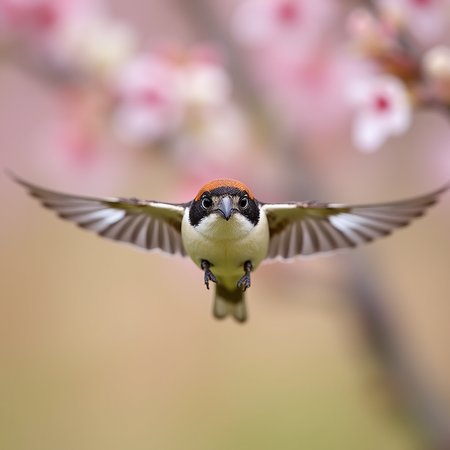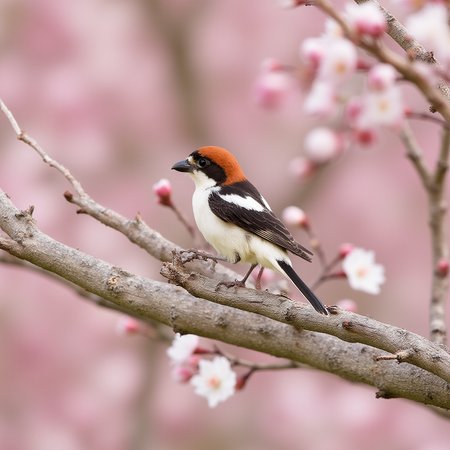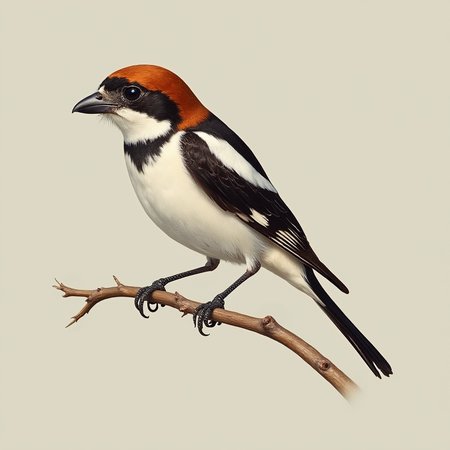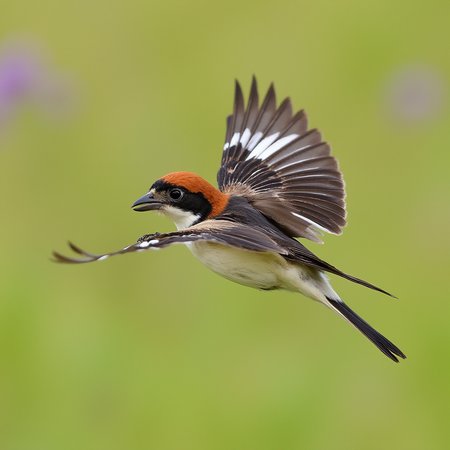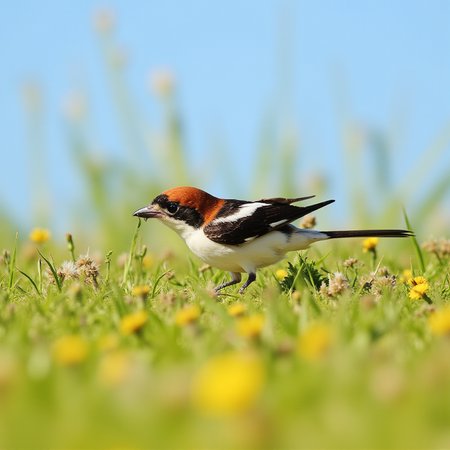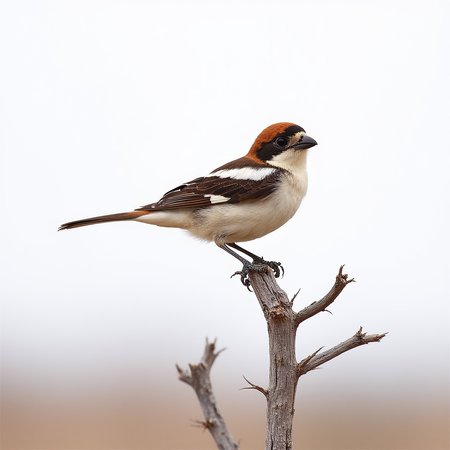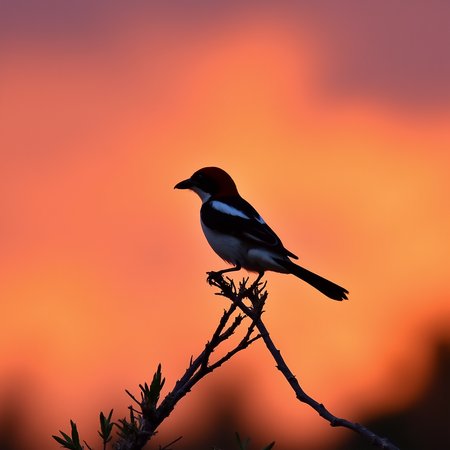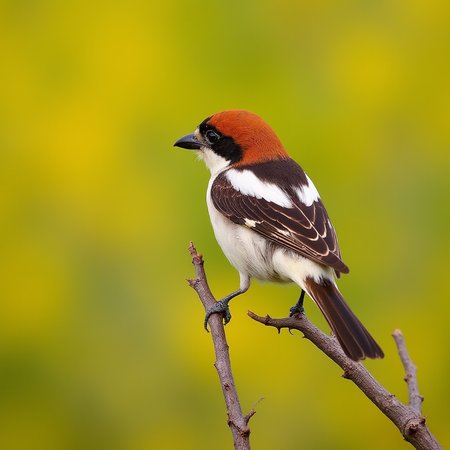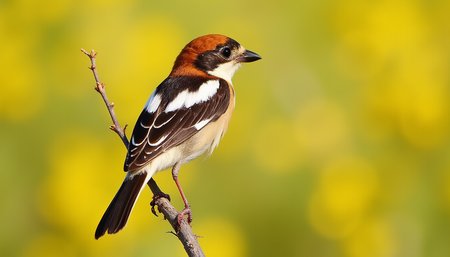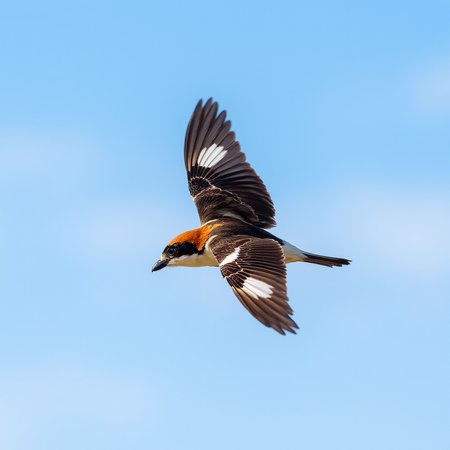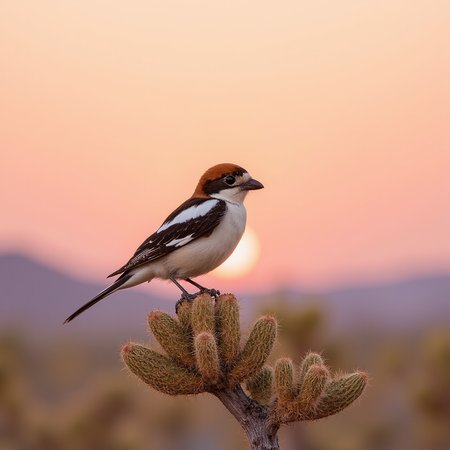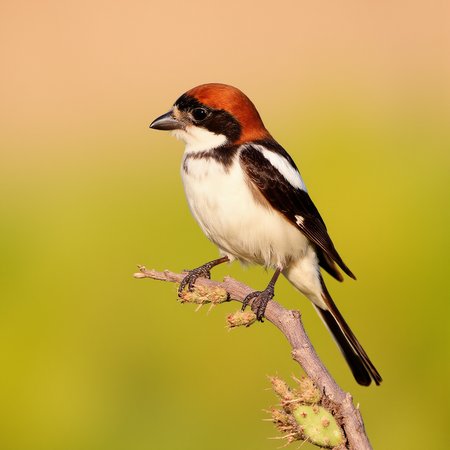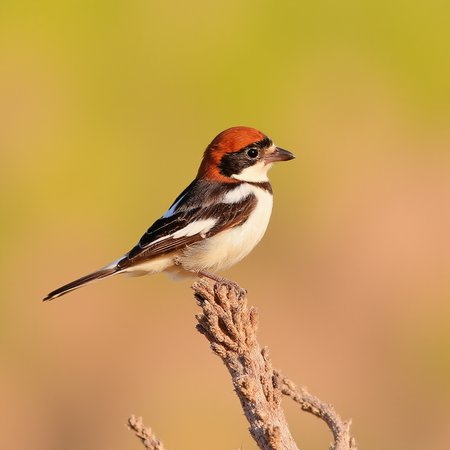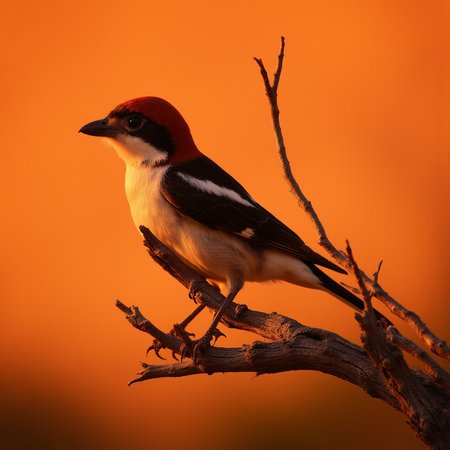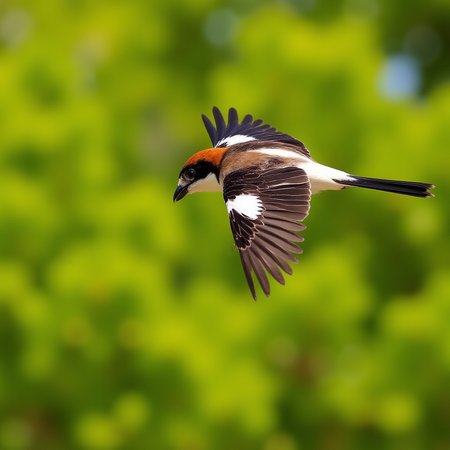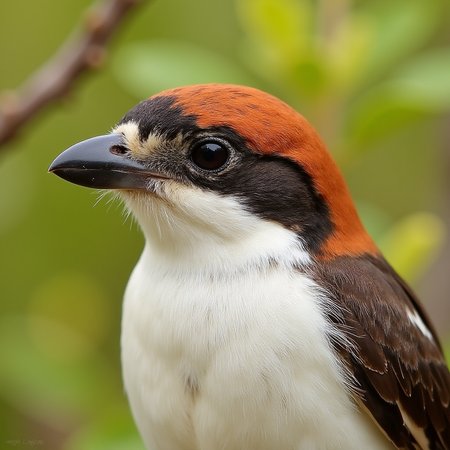The Woodchat Shrike (Laniussenator) is a medium-sized bird belonging to the shrike family, Laniidae. Known for its striking appearance and predatory behavior, it is a migratory species found across Europe, Africa, and the Middle East.
Physical Characteristics
Size: Approximately 17–19 cm (6.7–7.5 in) in length with a wingspan of about 27 cm (10.6 in).
Male: The male has a distinct appearance with a chestnut-colored crown and nape, which gives it its specific name "senator" (referring to the color of a Roman senator's toga). The rest of the head is marked by a black mask that extends from the forehead through the eye. Its back is black, contrasting with a white rump and underparts. The wings have a broad white patch at the base of the primaries, which is especially noticeable in flight.
Female and Juveniles: Females have a similar but duller plumage, with a paler cap and a black mask that often has some white markings. Juveniles are different, with a gray-brown upper body and a scaled or barred pattern on their underparts.
Habitat and Distribution
Breeding Range: The Woodchat Shrike breeds in southern Europe, northwest Africa, and the Middle East, including Turkey and Iran. It prefers open wooded areas with scattered trees, such as orchards, olive groves, and other agricultural landscapes with bare or sandy ground.
Wintering Range: It is a migratory bird that winters in tropical Africa, in a wide belt south of the Sahara Desert.
Migration: The birds leave their breeding grounds in late summer and early autumn, with adults typically migrating before juveniles. They return to Europe in the spring.
Diet and Behavior
Diet: The Woodchat Shrike is primarily insectivorous, with its diet consisting mainly of beetles and other large insects. It will also occasionally prey on small mammals and other birds.
Hunting: Like other shrikes, it has a predatory nature, earning its family the nickname "butcherbirds" (from the Latin genus name Lanius). It hunts from an exposed perch, such as a tree branch, fence post, or power line, and then swoops down to capture prey on the ground. It also makes sallies to catch flying insects.
Impaling Prey: While not as common as in some other shrike species, Woodchat Shrikes are known to occasionally impale their prey on thorns or barbed wire, a behavior that may be used to store food or to dismember larger insects.
Vocalization: The Woodchat Shrike has a variety of calls and songs. The song is often a melodic babble that can include imitations of other birds. The alarm call is a sharp "tec" or "tiet."
Conservation Status
The Woodchat Shrike is currently classified as "Least Concern" by the IUCN, but its population is considered to be declining. This is due to factors such as habitat loss, changes in agricultural practices, and pesticide use in both its breeding and wintering grounds.

